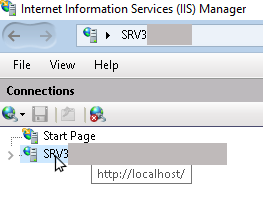How do I remove unnecessary HTTP Headers in IIS and ASP.NET application simply, please provide me step by step tutorial for improving security in this area?
I have already googled this and found few solutions but I need an easy tutorial, which can guide me to remove all unnecessary HTTP Headers from Response.
Any link or step by step guide will work.
 Answered by:- jaya
Answered by:- jaya
You can follow these easy steps to remove server response headers from IIS
<system.webServer> to remove X-Powered-By: ASP.NET that indicates website is powered by ASP.NET<httpProtocol>
<customHeaders>
<remove name="X-Powered-By" />
</customHeaders>
</httpProtocol>?<system.web> write <httpRuntime enableVersionHeader="false" />the above code will remove the X-AspNet-Version HTTP Header which broadcasts to the world what version of ASP.NET is being used by your web server.
<system.webServer> like below code<system.webServer>
<modules>
<add name="CustomHeaderModule"
type="YourProject.HelperMethods.CustomHeaderModule" />
</modules>
</system.webServer>For this step, you need to create an extra Class file like below
using System;
using System.Web;
namespace YourProject.HelperMethods
{
public class CustomHeaderModule : IHttpModule
{
public void Init(HttpApplication context)
{
context.PreSendRequestHeaders += OnPreSendRequestHeaders;
}
public void Dispose() { }
void OnPreSendRequestHeaders(object sender, EventArgs e)
{
// removes "Server" details from response header
HttpContext.Current.Response.Headers.Remove("Server");
}
}
}?The Server header is automatically added to the outgoing response by IIS, so use the above method to remove it.
Application_Start() method MvcHandler.DisableMvcResponseHeader = true;The above code removes X-AspNetMvc-Version HTTP Header which is automatically added by the ASP.NET MVC framework. If you are not using ASP.NET MVC then this header won't be present. However, if you are using ASP.NET MVC and want to remove this header as mentioned above.
That's it, you are done, your web-application is more secure now.
You can also do these steps using C# code in your Global.asax like below
protected void Application_PreSendRequestHeaders()
{
Response.Headers.Set("Server","New server");
Response.Headers.Remove("X-AspNet-Version");
Response.Headers.Remove("X-AspNetMvc-Version");
}
But it is not recommended, you can use the PreSendRequestHeaders and
PreSendRequestContext events with native IIS modules, but do not use them with managed modules that implement
IHttpModule. Setting these properties can cause issues with
asynchronous requests.
You can also use IIS URL Rewrite for IIS (UrlRewrite) after Download and Install IIS URL Rewrite, in the configuration section <configuration> -> <system.webServer> -> <rewrite> add the outbound rule:
<outboundRules>
<rule name="Remove RESPONSE_Server" >
<match serverVariable="RESPONSE_Server" pattern=".+" />
<action type="Rewrite" value="" />
</rule>
</outboundRules>
This will blank server headers (not remove them).
 Answered by:- bhanu
Answered by:- bhanu
If you are using IIS 10, then you can remove server headers using Web.Config also
<?xml version="1.0" encoding="UTF-8"?>
<configuration>
<system.webServer>
<security>
<requestFiltering removeServerHeader="true" />
</security>
</system.webServer>
</configuration>To Disable version header, use
<system.web>
...
<httpRuntime enableVersionHeader="false" />
...
</system.web>To disable 'X-AspNetMvc-Version', add the below C# code in 'Application_Start'
MvcHandler.DisableMvcResponseHeader = true;To remove 'X-Powered-By' custom header in web.config
<system.webServer>
<httpProtocol>
<customHeaders>
<remove name="X-Powered-By" />
</customHeaders>
</httpProtocol>
</system.webServer>If you are using Application Request Routing, it will add a Custom 'X-Powered-By' which you cannot remove using the above settings.
To remove that, you will have to enable configuration in IIS Root,then navigate to system.webServer/proxy node and set
arrResponseHeader to false.
OR
Follow these steps:



You can also set these settings on each individual websites if needed
OR
Using Registry
Navigate to "HKLM\SYSTEM\CurrentControlSet\Services\HTTP\Parameters"
Create a DWORD entry called DisableServerHeader in the following Registry key and set the value to 1.
After adding the Registry key, restart the HTTP service using the net stop http command and the
net start http command.
If the HTTP service doesn’t start up then use the iisreset command. If that also doesn’t work then you can restart the server.
Note: This method is used only when the Server header comes as "Microsoft-HTTPAPI/2.0".
 Answered by:- jaiprakash
Answered by:- jaiprakash
In .NET Core 6, you can remove server headers using below code:
var builder = WebApplication.CreateBuilder(args);
builder.WebHost.UseKestrel(option => option.AddServerHeader = false);Thanks.
Subscribe to our weekly Newsletter & Keep getting latest article/questions in your inbox weekly